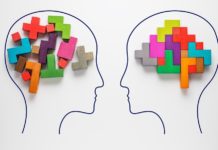Understanding the difference between problem and conflict is essential to finding the most effective psychological strategies to handle both situations. Knowing our inner states, giving them a name and understanding their dynamics will allow us to face them in the best possible way and make decisions we won't have to regret in the future, keeping affective states under control to avoid hit bottom emotionally.
What is a problem and what isn't?
The term problem is often used to refer to different situations. A problem, for example, can be a question for which we have no answer, but it can also be a situation that makes us uncomfortable and we don't know how to get out of it.
The psychological problem occurs when we try to achieve an end, but we find a series of circumstances that prevent us from doing so. In that case, it becomes an obstacle in our way because we don't know how to remove or avoid it.
In fact, it should be clarified that we often call situations that are simple difficulties or setbacks a "problem". For example, if the subway or bus is late, it's a mishap. If, on the other hand, trips are canceled and we don't know how to get to our destination, it's a problem.
Therefore, problems are all those situations for which we do not have an immediate solution, circumstances that we cannot solve in a reasonable time, so much so that they force us to think of a solution strategy.
What exactly is a conflict?
Conflict occurs when there are two opposing interests. In interpersonal conflicts, for example, there is a situation that needs to be resolved, but the people involved disagree because they have different interests, expectations or points of view.
In intrapersonal conflict, disagreement occurs within us. When we face a certain situation, part of us wants something and another part wants the opposite. We may be aware, for example, that we 'should' do something, but actually 'want' to do something else. Or we may experience divergent emotions at the same time, such as attraction driving us to action and fear holding us back. Those forces that push in different directions generate conflict.
As with problems, we often define "conflicts" as situations that aren't conflicts or that actually are pseudo-conflicts. Having differences or even expressing disagreement, for example, does not imply the existence of a conflict per se. For conflict to occur, two forces need to be set in motion pushing in opposite directions at the very moment when these forces need to converge and come together to make a decision or do something.
Consequently, conflict situations involve a duality that is difficult to escape.
What is the main difference between problem and conflict?
By definition, conflict is a disagreement, a contradiction that arises from the inconsistency of judgments, objectives, interests, inferences, conclusions or opinions on certain aspects. Instead, the problem is a condition or situation that is considered unpleasant or harmful, but which we cannot overcome immediately because we lack the material, cognitive, emotional, or other resources to find a solution.
Therefore, the main difference between problem and conflict lies in its character. While conflict has a dichotomous character because it always involves at least two opposing positions or forces, even when it is an intrapersonal conflict, problems suffer from this dichotomy because they only imply a difficulty, a doubt or an uncertainty that we have to resolve.
Since these are different psychological realities, the way of dealing with them is also different. It is no coincidence, in fact, that there are both conflict resolution techniques and strategies problem solving.
Conflict resolution techniques focus on bringing divergent forces together to resolve a stalemate. Both interpersonally and intrapersonally, one works to understand the pros and cons of each position, find common ground, set a goal, clarify the compromises that need to be made, and ultimately commit to change.
Instead, the strategies of problem solving they are processes focused on finding solutions. Although they foresee the analysis of the situation and take into account the objective we want to achieve, the work focuses more on promoting divergent thinking that gives rise to creative and original ideas to remove the obstacle or answer the doubt.
Therefore, while conflict resolution techniques enhance convergence, problem solving strategies encourage divergence. The differences in approach to problem and conflict are due to the fact that although both usually lead to paralysis, their underlying psychological mechanisms are different.
In conflict, paralysis is due to divergent forces pushing in opposite directions, creating indecision and keeping us tied to the situation. Instead, many times problems block us because of our own mental rigidity; that is, to the fact that we are unable to see beyond what is happening to find solutions.
Problems and conflicts: two non-exclusive psychological realities
In our daily life we face many problems and conflicts. Typically these are irrelevant situations that we can quickly resolve and forget about. But in some cases the problems and conflicts can coincide, causing enormous emotional anguish that leads to paralysis.
For example, we may be faced with vital problems whose possible solutions generate internal conflicts. In these cases, the solutions we see are conflicting, so much so that we are unable to decide. Thus the conflict ends up fueling and prolonging the problem.
However, the opposite can also happen: i latent conflicts they can generate problems in our interpersonal relationships or in our inner world. In these cases the problem can end up aggravating the conflict, condemning us to paralysis and anguish.
Understanding the difference between problem and conflict, as well as the psychological mechanisms that underlie it, will help us shed some light on what is happening so that we can find the best path or, at least, give us a move to get out of it. an emotionally draining paralyzed situation.
Sources:
Schmindt, HG et. Al. (2011) The process of problem-based learning: what works and why. Medical Education; 45 (8): 792-806.
Lichbach, MI et. Al. (1981) The Conflict Process: A Formal Model. Journal of Conflict Resolution; 25 (1): 10.1177.
Admission The difference between problem and conflict you should know was published first in Corner of Psychology.

















































